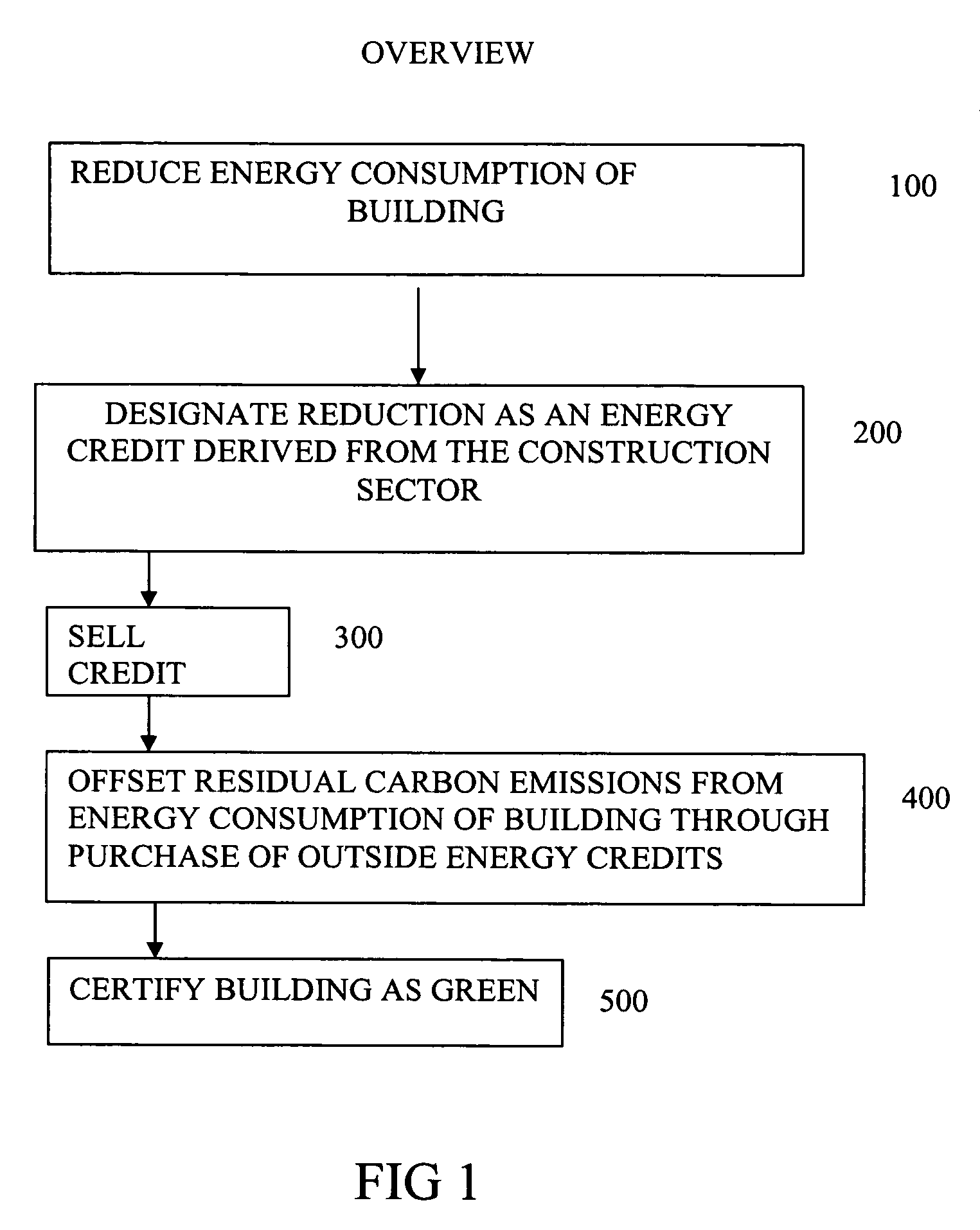System and method for creating and using energy credits derived from the construction industry while maintaining green certificateion
a technology of energy credits and construction industry, applied in the field of carbon cap and trade, renewable energy, energy efficiency industries, can solve the problems of economic loss across various industries, lack of national system of recs administration and accounting, and failure to fully utilize the concept of carbon credi
- Summary
- Abstract
- Description
- Claims
- Application Information
AI Technical Summary
Benefits of technology
Problems solved by technology
Method used
Image
Examples
Embodiment Construction
[0022]The present invention in its various embodiments is a system and method for creating and using energy credits in a building and in building construction, which credits are specifically derived from the construction industry, as well as maintaining green certification. More specifically, the system and method involves a process whereby the energy consumption of a building or planned building is reduced, the reduction being quantified as an energy credit derived from the construction sector, and then sold. The carbon emissions resulting from the residual energy consumption of the building is then ascertained and offset through the purchase of outside energy credits, and the building is certified as green.
[0023]FIG. 1 is a flow chart that generally illustrates the system and method claimed by delineating the steps involved at a broad level. In one embodiment of the current invention, the steps take place as part of an overall program through which homeowners, builders, or other e...
PUM
 Login to View More
Login to View More Abstract
Description
Claims
Application Information
 Login to View More
Login to View More - Generate Ideas
- Intellectual Property
- Life Sciences
- Materials
- Tech Scout
- Unparalleled Data Quality
- Higher Quality Content
- 60% Fewer Hallucinations
Browse by: Latest US Patents, China's latest patents, Technical Efficacy Thesaurus, Application Domain, Technology Topic, Popular Technical Reports.
© 2025 PatSnap. All rights reserved.Legal|Privacy policy|Modern Slavery Act Transparency Statement|Sitemap|About US| Contact US: help@patsnap.com



